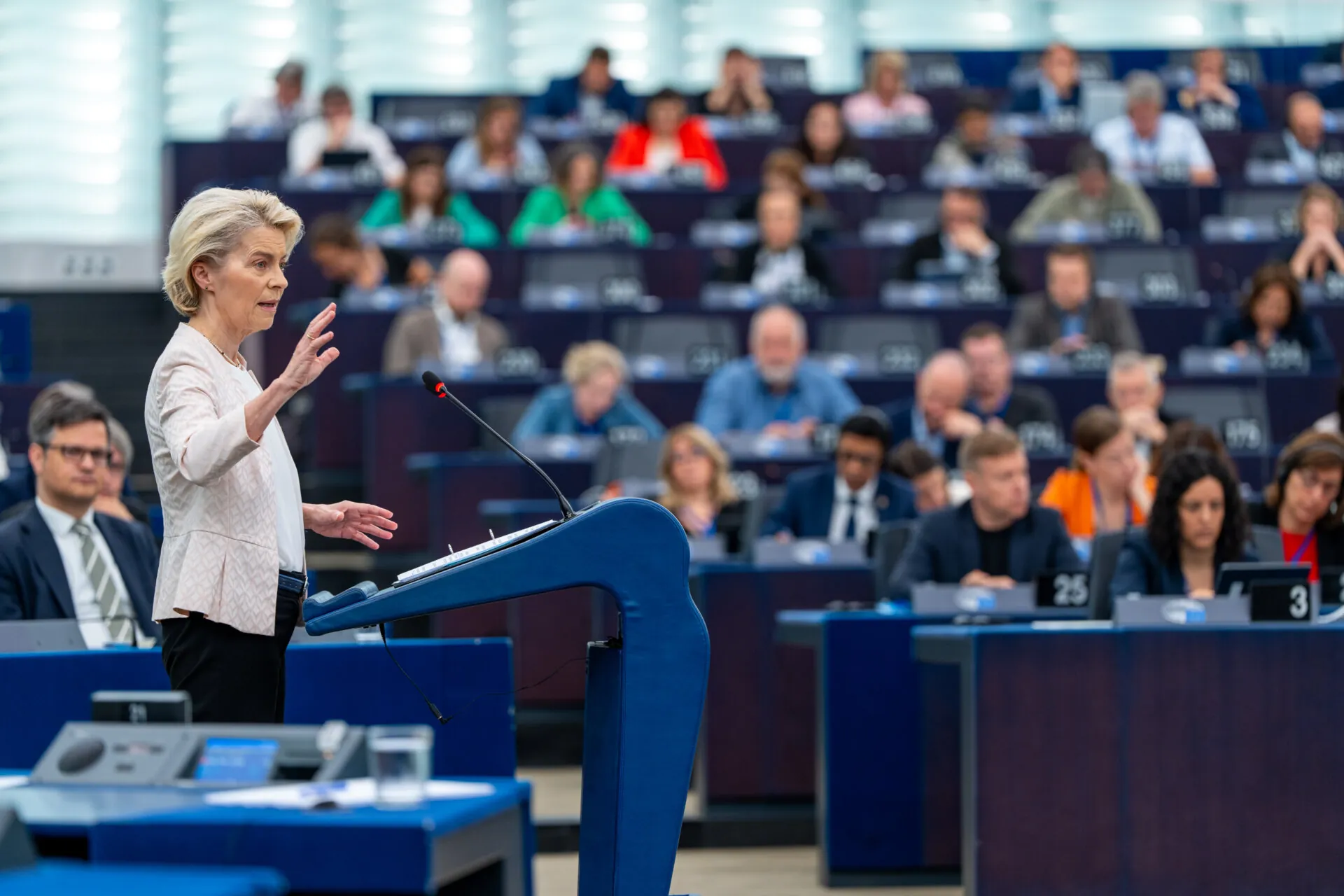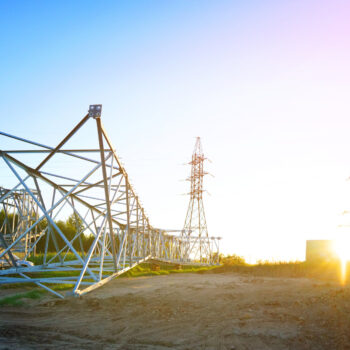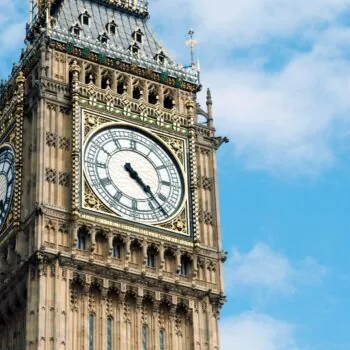On 18 July, Ursula von der Leyen was confirmed to continue as European Commission President. Her ‘Political Guidelines’ provide a basis for the green transition in Europe to continue and accelerate, but they also exhibit weaknesses, such as an insufficient focus on electrification and public funding. How do the ‘Political Guidelines’ compare to E3G’s benchmarks for the EU to deliver on a fast, fair and funded green transition? What are the major strengths, gaps and weaknesses?
Clear and stable trajectory towards climate neutrality and climate resilience: mixed
Strengths: Von der Leyen signals continuity by committing to all goals set out in the European Green Deal and implementing the EU’s legal framework to meet the 2030 target. She endorses a 90% emission reduction target for 2040 and aims to move further away from fossil fuels.
Weaknesses: Hinting at changes to the internal combustion engine ban in 2035 contradicts the full implementation of the 2030–framework. The push for simplification and cutting red tape risks derailing into a tried and failed deregulation agenda, which could hamper clarity and certainty in the green transition for investors, citizens and authorities.
A resilient, fair, and green industrial deal: good potential
Strengths: A promising new “Clean Industrial Deal” in the first 100 days to decarbonise industry and create lead markets in clean technologies through updated procurement rules and to increase investment in research and innovation.
Weaknesses: The new Clean Industrial Deal seems to prioritise efficiency and “Made in Europe” over social and environmental considerations. New proposals must ensure that industrial policy provides long-lasting economic, social, and environmental benefits to all Europeans.
Energy security through cheap renewables, connectivity and flexible demand: mixed
Strengths: The benefits of decarbonisation as a path to lower energy prices are recognised. The announced governance for a “true Energy Union” has the potential to enhance institutional and delivery capacities for energy security. Investments in clean energy infrastructure, energy efficiency, and digitalisation are mentioned but depend on a successful finance agenda.
Weaknesses: While the guidelines recognise the need to quickly move away from costly fossil fuels, they remain vague on how direct electrification of end- use sectors will be secured. A critical assessment of the most efficient applications of hydrogen is lacking.
A just and green EU social model: good potential
Strengths: New impetus for the implementation of the European Pillar of Social Rights, a new focus on housing and poverty reduction, and increased funding for the just transition have the potential to increase social fairness.
Weaknesses: The political guidelines lack a clear connection between economic, social, and climate policies, which could impede progress.
Funding and investment at the scale that’s required: needs improvement
Strengths: Announcement of an “Investment Commission” recognises the structural needs for better integrating Europe’s financial markets and de-risking private investments.
Weaknesses: There is no coherent answer to the large green investment gap in the context of an expiring Recovery and Resilience Fund, fiscal restrictions imposed by updated fiscal rules, and competition with increased defence spending. The new push for an investment and a savings union, and a new Competitiveness Fund lack a focus on sustainability.
Europe as a credible and reliable leader internationally: mixed
Strengths: A commitment to a long-overdue update of the EU foreign policy strategy, including economic foreign policy and a vision for energy and climate diplomacy. New Clean Trade and Investment Partnerships offers are promising tools that require clarity on benefits to third countries beyond extracting energy and materials, as well as adequate governance and resourcing.
Weaknesses: International climate leadership is mentioned, but there are important omissions regarding a strategy towards large emitters, climate finance, and other means of support towards vulnerable countries. The securitisation of migration can harm effective cooperation. The EU needs to preserve space for climate cooperation despite a more assertive stance towards China.
What’s next?
Ursula von der Leyen can strengthen her policy agenda in the coming months when drafting mission letters for the new Commissioners, who will be nominated by the Member States soon. Members of the European Parliament can extract additional policy commitments from candidate Commissioners during hearings by Parliament committees in September. This process can address gaps in the Political Guidelines of the President-elect for a successful green transition.


